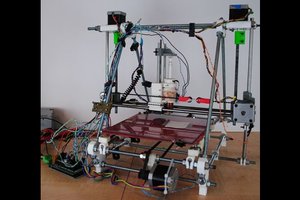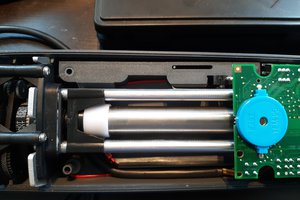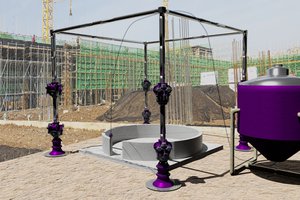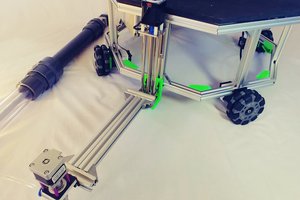As low-cost desktop 3D printing is now dominated by free and open source self-replicating rapid prototype (RepRap) derivatives, there is an intense interest in extending the scope of potential applications to manufacturing. This study describes a manufacturing technology that enables a constrained set of polymer-metal composite components. This paper provides:
- free and open source hardware
- software for printing systems that achieve metal wire embedding into a polymer matrix 3D-printed part via a novel weaving and wrapping method using
- OpenSCAD and parametric coding for customized g-code commands.
Composite parts are evaluated from the technical viability of manufacturing and quality. The results show that utilizing a multi polymer head system for multi-component manufacturing reduces manufacturing time and reduces the embodied energy of manufacturing. Finally, it is concluded that an open source software and hardware tool chain can provide low-cost industrial manufacturing of complex metal-polymer composite-based products.
- Click here for more information.
- Click here to download full paper.
CUSTOM PARTS AND ENCLOSURES
Metal polymer composite Gigabot printed/structural components
Metal-polymer composite Gigabot mechanical bill of materials.
SCHEMATICS
Assembled two RAMPS 1.4 with custom I/O PCB per the KiCAD-PcbNew specification
Secondary I/O PCB schematic developed in KiCAD-PcBNew.
Electromechanical process map of the metal-polymer composite Gigabot
This diagram
represents a qualitative understanding of the primary connection points between operational
mechanisms and electronic controllers. Extruder motors: A, E0, E1, E2, E3. Directional motors:
X, Y0, Y1, Z0, Z1. Solenoid end stops: XS, Y0S, Y1S, Z0S, Z1S. Thermistors: T1, T2, T3, T4, T5. Heater
cartridges: H1, H2, H3, H4, H5
 MOST
MOST






 dennis
dennis
 jon.knutton
jon.knutton
 Edgar Bolivar
Edgar Bolivar